Established 2002
Lucinda Shepherd, friend Robert Randell and various experts for their support.
What is an ammonite?
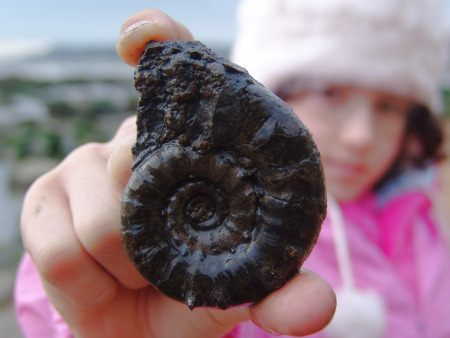
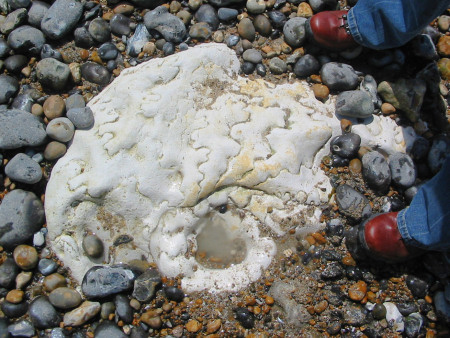
Left: A pyritised ammonite found at Charmouth. Right: A giant chalk ammonite exposed on the foreshore at Peacehaven.
Ammonites are perhaps the most widely known fossil, possessing the typically ribbed spiral-form shell as pictured above. These creatures lived in the seas between 240 - 65 million years ago, when they became extinct along with the dinosaurs. The name 'ammonite' (usually lower-case) originates from the Greek Ram-horned god called Ammon. Ammonites belong to a group of predators known as cephalopods, which includes their living relatives the octopus, squid, cuttlefish and nautilus (see pictures below).
 Octopus |
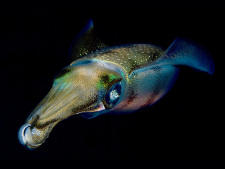 Squid |
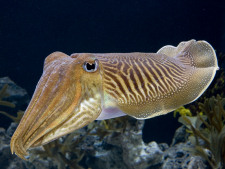 Cuttlefish |
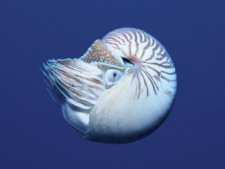 Nautilus |


ADVERTISEMENT BY UKGE - OFFICIAL ADVERTISING PARTNER OF DISCOVERING FOSSILS
How did ammonites evolve?
These sea creatures first appeared 415 million years ago in the form of a small, straight shelled creature, known as Bacrites. They quickly evolved into a variety of shapes and sizes including some shaped like hairpins. During their evolution the ammonites faced no less than three catastrophic events that would eventually lead to their extinction. The first event occurred during the Permian (250 million years ago), where only 10% survived. These surviving species went on to flourish throughout the Triassic, however at the end of this period (206 million years ago) they faced near extinction, when all but one species survived. This event marked the end of the Triassic and the beginning of the Jurassic, during which time the number of ammonite species grew once more. The final catastrophe occurred at the end of the Cretaceous period when all species were annihilated and the ammonites became extinct. This event apparently coincided with the death of the dinosaurs.
How did ammonites live?
Ammonites began life as tiny planktonic creatures less than 1mm in diameter. In their infancy they would have been vulnerable to attack from other predators, including fish; however, they quickly assumed a strong protective outer shell that shielded their soft interior from damage. Evidence suggests that they gained in size rapidly, with females growing up to 400% larger than the males.
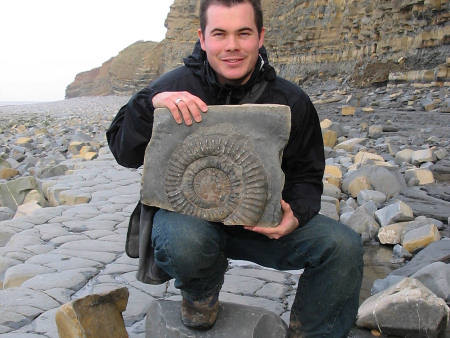
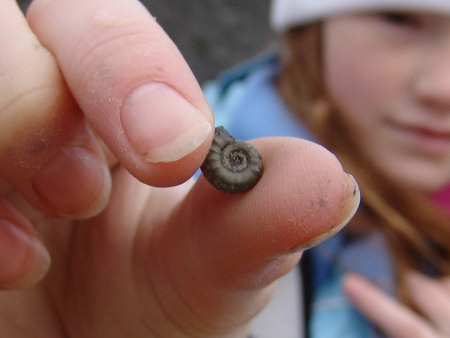
Left: Roy holds a
fantastic ammonite, found on the foreshore at
Quantoxhead.
Right: A participant on a Discovering Fossils event holds
a small ammonite.
Ammonites moved by jet propulsion, expelling water through a funnel-like opening to propel themselves in the opposite direction. They typically lived for two years, although some species survived beyond this and grew very large as pictured above. Evidence of their short lives is estimated by looking at their living relatives - the nautilus. These creatures exist within modern day seas and possess many characteristics similar to ammonites (see picture below).
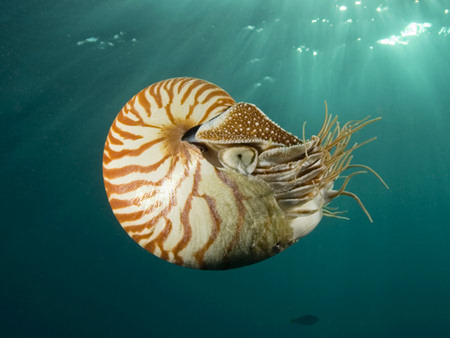
Living nautilus found in tropical seas around
the world.
Nautilus shells comprise of individual chambers, each growing in size as the creature grows. These chambers are secreted by the creature at a rate of one every four weeks, equal to 13 each year. Using this as a guide an ammonite shell containing 26 chambers could be assumed to have housed the creature for two years. Like the nautilus, ammonites retained their original shell throughout their life. However it's worth noting that in comparison to modern day nautili which live in cold, deep water, ammonites preferred warm shallow waters and may have had a higher metabolism. Consequently, it's possible that ammonites could reach larger sizes far quicker than modern day nautili.
Ammonites were the predators of their time, feeding on most living marine creatures including molluscs, fish and even other cephalopods. By analogy to modern cephalopods, their method of attack probably comprised of silently stalking their prey, then rapidly extending their tentacles to grasp the target. Once caught the prey would be devoured by the ammonite's powerful jaws, located at the base of the tentacles, between the eyes.
Much of the ammonite's life was spent in shallow waters. The evidence to support this includes their diet, which could be found in the greatest volumes in the warm shallows. It is also unlikely that their shells could withstand the high pressures present in deep water (over 100 meters). Other theories based around their social behaviour suggest their shells were decorated by an array of patterns, indicating that colour/good light played a large part in their lives.


ADVERTISEMENT BY UKGE - OFFICIAL ADVERTISING PARTNER OF DISCOVERING
FOSSILS
What does the shell reveal about the ammonite?
Most ammonite shells are coiled, and all contain a series of linked chambers. The body of the ammonite was contained within the large final, open-ended section called the living or head chamber, from which the tentacles were extended to catch prey. The opening of the shell - called the aperture - was possibly covered by a protective shield that could shut to protect the ammonite from other predators.
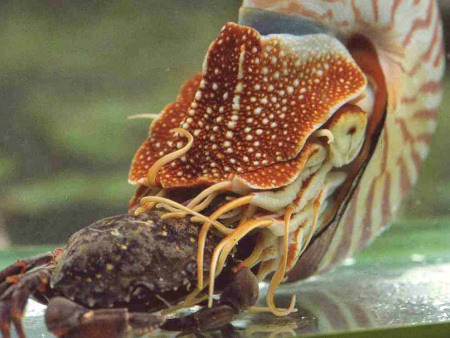

Left: A modern-day
nautilus preys upon an crab. Right: The internal
chambers visible in the cross-section of a nautilus shell.
As the animal grew, new chambers were added behind the head chamber. The chambered interior of the shell is referred to as the phragmocone, and in life this contained gasses which enabled the ammonite to regulate its buoyancy within the water column. A small tube called the Siphuncle links the chambers.
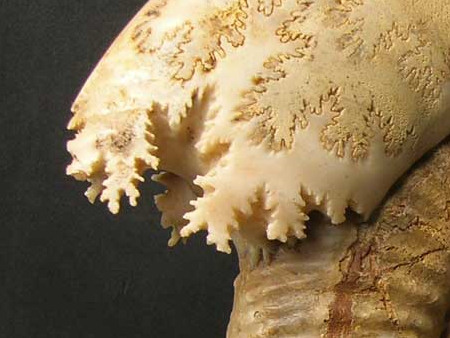
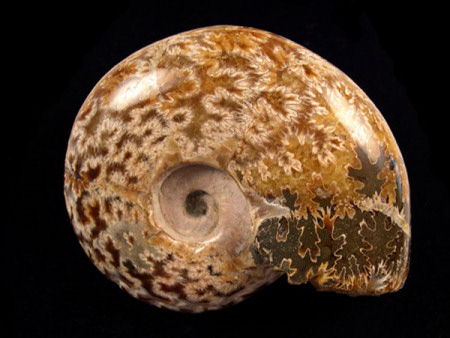
Suture marks visible on the outer
surface of the fossil ammonite shells.
Some ammonite fossils bear intricate patterned details on their outer surface called Sutures. These are located beneath the external shell wall, and are often visible if the fossil has been subject to weathering or artificial polishing. These patterns mark where the walls of the chambers, Septum, meet the outer wall of the ammonite shell. The bulk of the septum is relatively flat, but becomes folded where it meets the outer shell. This method of construction is thought to have provided strength to the shell when diving to deeper depths. Suture patterns are very useful for distinguishing different species of ammonite.
Join us on a fossil hunt
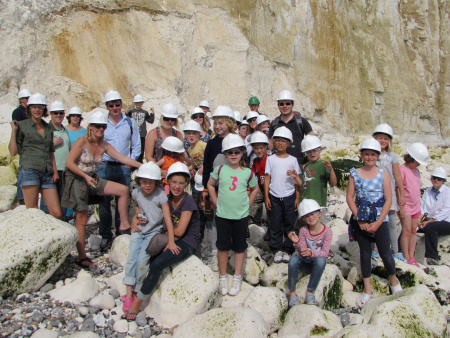
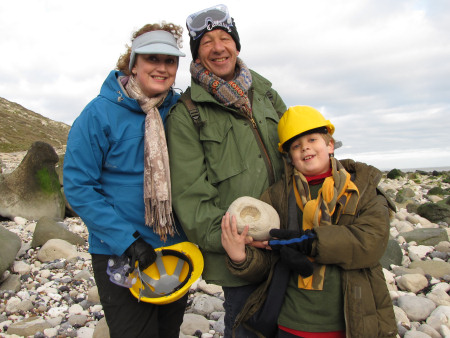
Left: A birthday party with
a twist - fossil hunting at
Peacehaven.
Right: A family hold their prized ammonite at Beachy Head.
Discovering Fossils guided fossil hunts reveal evidence of life that existed millions of years ago. Whether it's your first time fossil hunting or you're looking to expand your subject knowledge, our fossil hunts provide an enjoyable and educational experience for all. To find out more CLICK HERE




